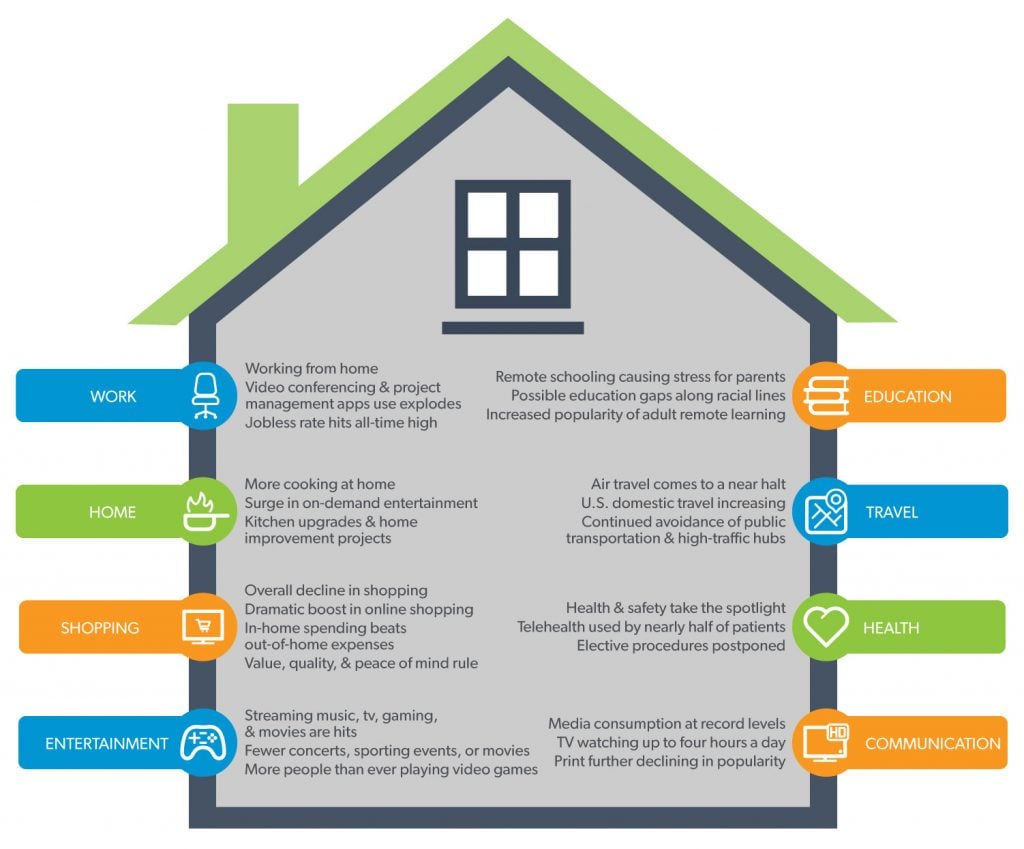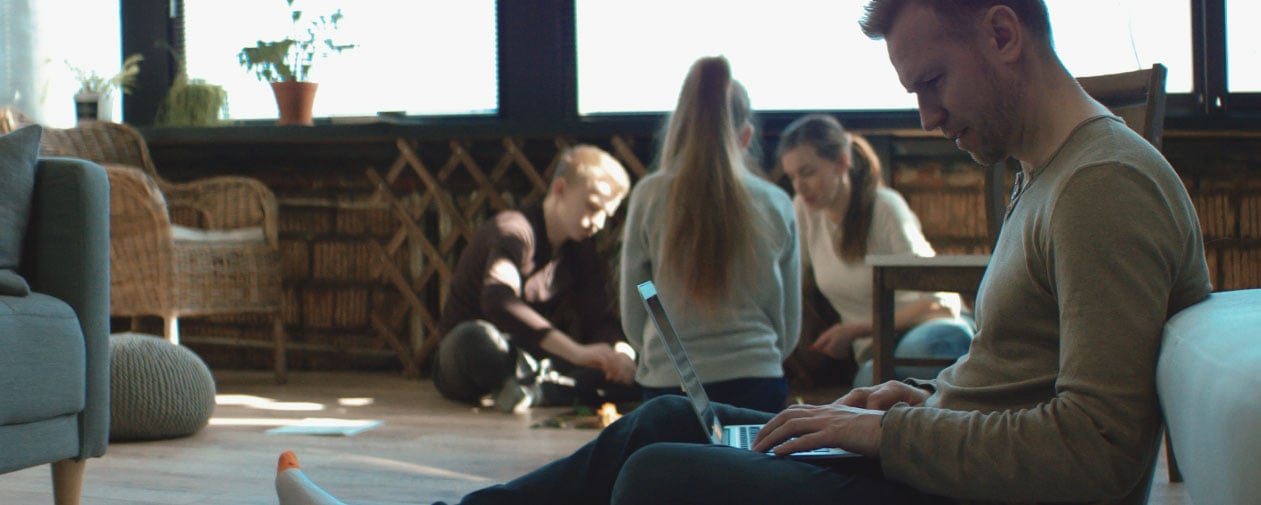More Than Digital: How Consumer Lives Have Changed Post-COVID-19
It’s hard to overstate how greatly lives have changed for consumers in America—and across the globe—as a result of the coronavirus pandemic.
The home has become the hub of work, school, and entertainment, and with it, Americans are becoming homebodies. Spending patterns are changing, new shopping habits are being adopted, and people are approaching their decisions and days differently.
Retail and brand leaders should take note.

Work
Although remote work had been slowly gaining interest among “digital nomads” and startups, the demands for non-essential workers to stay at home were enough to get executives to transfer employee responsibilities online. 42% of the U.S. labor force is now working from home1.
Consumers are using online tools for video conferencing and project management more than ever before, normalizing working from anywhere.
At the same time, unemployment claims continue as demand for in-store and restaurant service lags. Jobless numbers hit an all-time high of 14.7% in April 20202.
Home
Just as workspaces are now located steps from the bedroom, kitchen tables and nooks in the dining room have transformed into schools.
Instead of eating out, people are cooking. They’re seeking in-home entertainment instead of going to a concert or a movie. They’re also finally getting around to those home improvement projects. All of these behavioral changes are impacting the way people spend their money3.
Shopping
Americans will always be consumers, but the overall decline in purchases seen as a result of the COVID-19 pandemic is expected to continue4. This is especially true for businesses that rely solely on brick-and-mortar establishments to interact with their customers. Still, shoppers continue to buy at stores despite fewer promotions and limited availability of products.
Not surprisingly, there’s been a significant increase in online shopping since the beginning of the pandemic. Retailers and brands with strong online presences and contact-free delivery options have seen dramatic growth in online sales in 20205.
But spending looks different. Spikes in unemployment, economic uncertainty, and declining consumer confidence are causing consumers to look for products and services that deliver value, quality, and peace of mind6.
Entertainment
For better or worse, many individuals and families have discovered an increase in leisure time during shelter-at-home mandates. But rather than using that time for going out to movies, concerts, or sporting events, people are staying in. Game apps, virtual museum tours, and online performances have become the norm.
As a result, there’s been a substantial shift to streaming entertainment options. Just look at Disney+: in its first five months, it earned 50 million subscribers7. It took Netflix seven years to achieve the same numbers.
Music streaming is also part of the “next normal,” already surging since 2019 but buoyed by the cancelations of live music events due to the coronavirus8.
Education
Any parent now knows the stress of overseeing their child’s education at home, with more students at all levels learning remotely. This presents concerns for long-term economic growth in America, with education gaps from racial inequalities growing and projected income expected to shrink9.
Adults are learning online as well to gain new skills and a competitive edge in the marketplace. Employment training has also gone online, with more and more companies delivering essential training virtually. More people are becoming increasingly comfortable with basic digital skills while enjoying a variety of online courses9.
Travel
If consumers are shopping, working, learning, and being entertained at home, it stands to reason that travel has dramatically diminished as a result of COVID-19. In June, there was a reported 96% reduction in U.S. airline passengers compared to the previous year10. People are avoiding public transportation and crowded hubs.
While international travel is expected to remain light for the next few years, domestic travel has increased throughout the United States. Consumers itching to get out of the house are enjoying camping and renting RVs at an increased rate11.
Health
Without a doubt, the changes in consumer behavior as a result of COVID-19 are an attempt to improve personal safety for themselves and others. People are taking their health more seriously due to the new risk, and that’s also impacting how they’re maintaining their well-being.
The availability and adoption of remote health care services took off soon after the pandemic began, and telehealth became a preferred solution for patients and physicians alike12. At the same time, fearing the risk of infection, many pushed off elective surgeries and other procedures.
Communications
Media consumption is at an all-time high as consumers search for in-home entertainment options. They’re watching more television, scrolling social media, reading the news online, and listening to the radio. Americans on average spend nearly four hours a day watching television alone13.
Meanwhile, print magazines, books, and newspapers are declining in popularity. As a result, small publications are folding or laying off journalists across America14.
Social media is taking print’s place. More than 40% of surveyed consumers in the United States reported that their use of Facebook and Instagram would likely increase — presenting retailers and brands opportunities to expand their reach with digital marketing campaigns15.
New Consumer Expectations
With the holistic changes in lifestyle that have resulted from the coronavirus pandemic, consumers now expect a new experience when shopping. It’s not just a matter of making your retail store or brand available online. Even brick-and-mortar retailers must rework their layouts, service offerings, and safety protocols to address the new behaviors.

